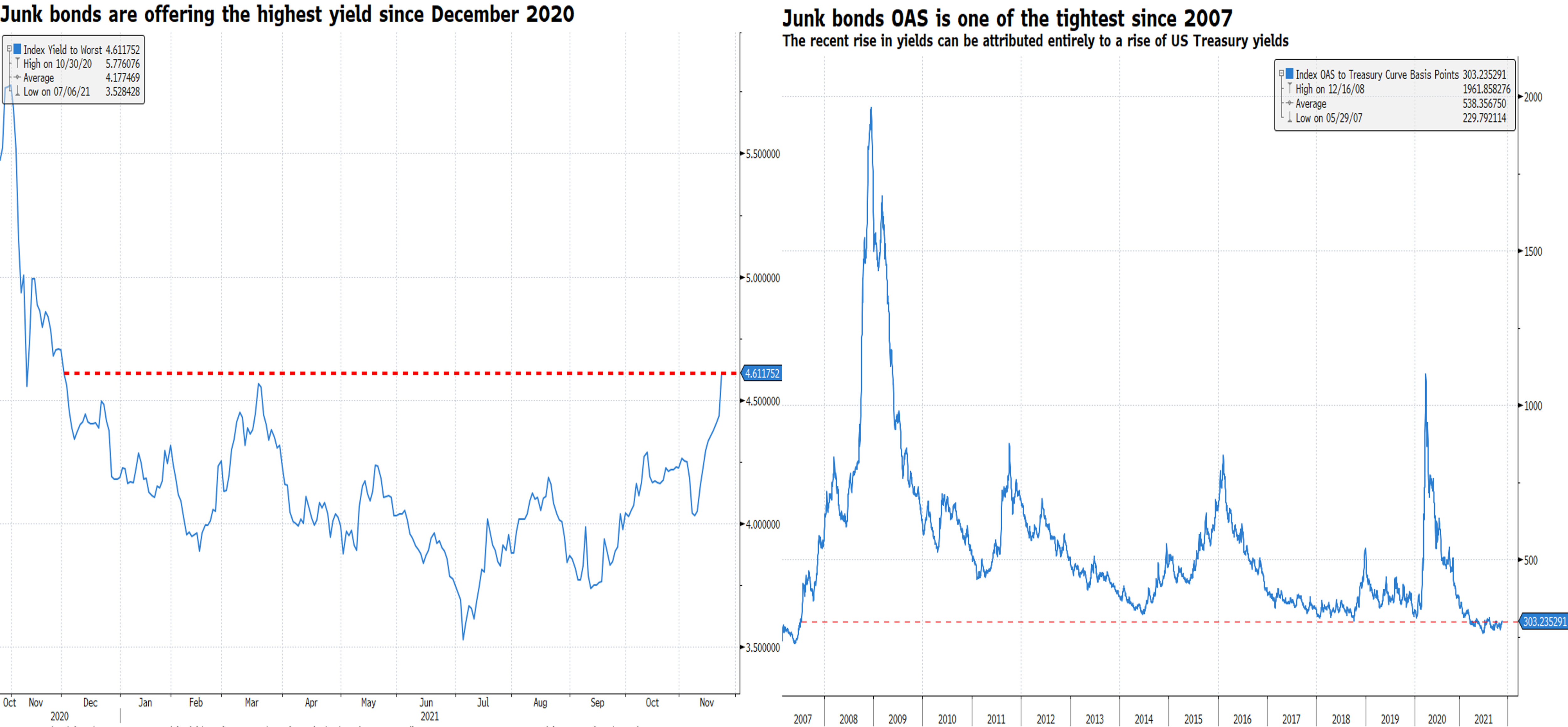Investors should start to worry about their investments as there are signs of US Treasury yields moving higher, dragging with them lower-rated credits.
HYG, the iShares iBoxx High Yield Corporate Bond ETF, has broken a key support level at 86.5. Moving averages are all dropping in a sign that the ETF could further fall. Once the weak support line at 85.7 is broken, the ETF will likely continue its fall to 84.8.


The problem is that the higher US Treasury yields soar, the more pressure will be applied on weaker bonds, ultimately causing credit spreads to widen. At that point, it will be too late for risky assets as volatility will become endemic in both the bond and stock market.
One way to know when we might face a broad selloff is to monitor real yields. The faster they rise, the quicker financing conditions are tightening for the corporate space. Real yields remain well below zero. However, as the Federal Reserve prepares to tighten the economy, we can expect breakeven rates to fall and nominal yields to rise, accelerating the rise in real yields. That could provoke a deep selloff, not only within the junk bond space but also in stocks with high duration, such as tech stocks. That’s is what happened amid the Taper Tantrum in 2013.

Therefore, it is vital to monitor the movements of both real and nominal yields. Below, we are going to highlight some critical levels.
Real yields
Ten-year TIPS have traded rangebound since August. However, if they break above their descending trendline, they will likely rise to test resistance at -0.70%. If interest rate hikes accelerate by the end of the year, we can expect real yields to rise to -0.50%. Partly, valuations will continue to be supported by negative real yields. Still, repricing will be inevitable due to the fast rise of real yields.

Nominal yields
Ten-year US Treasuries are trading in an uptrend. Yet, we expect them to remain in check until the debt ceiling crisis has been resolved, as they will serve as a safe haven amid volatility in money markets. At that point, they are likely to break above 1.75% and continue to rise to 2% amid inflationary pressures and more aggressive monetary policies.

Five-year yields are also trading in an uptrend towards 1.50%.

Two-year yields are likely to accelerate their rise as the market prices earlier interest rate hikes. Yields broke resistance at 0.55%, and they are now in a fast area which could take them quickly to 1%.





